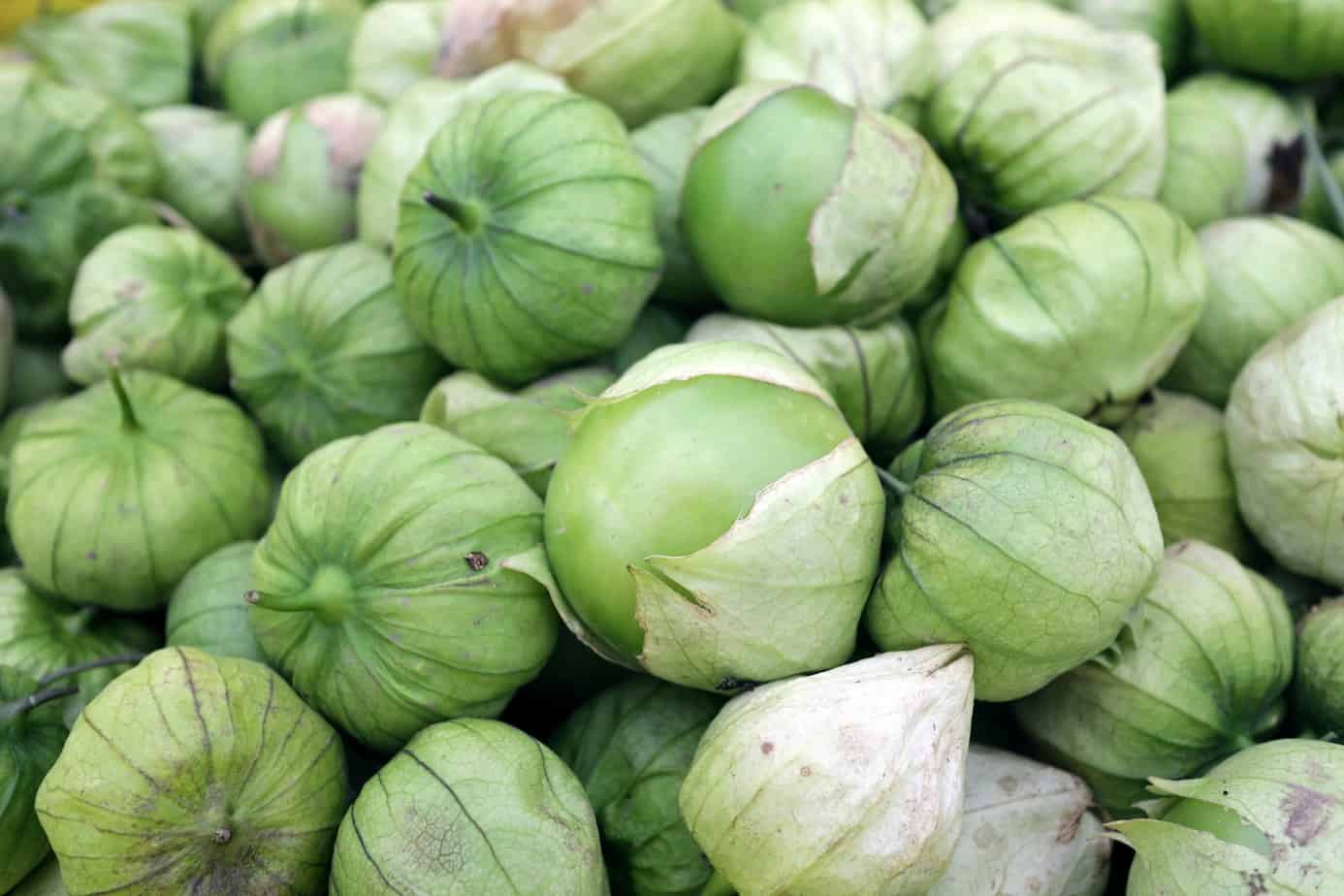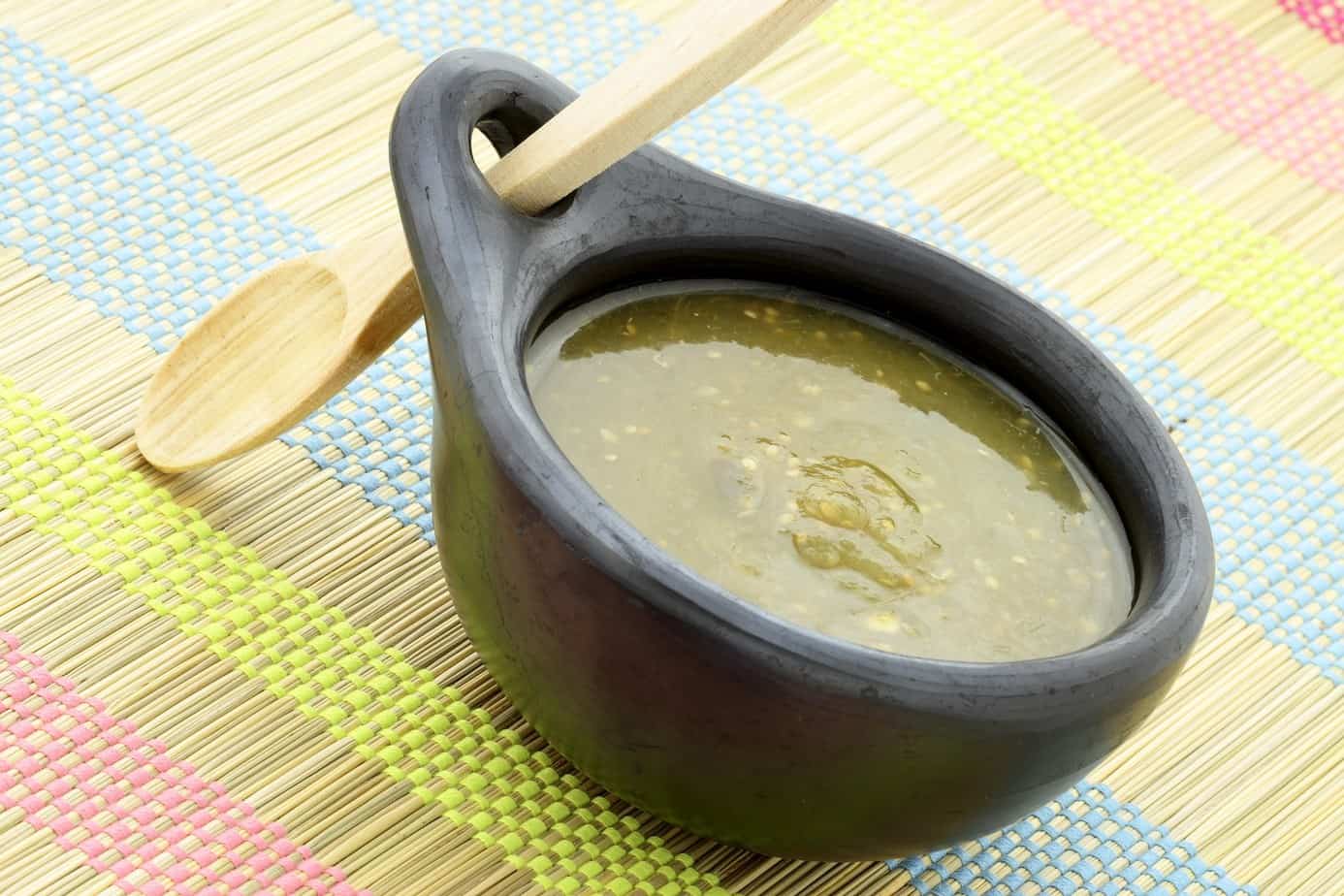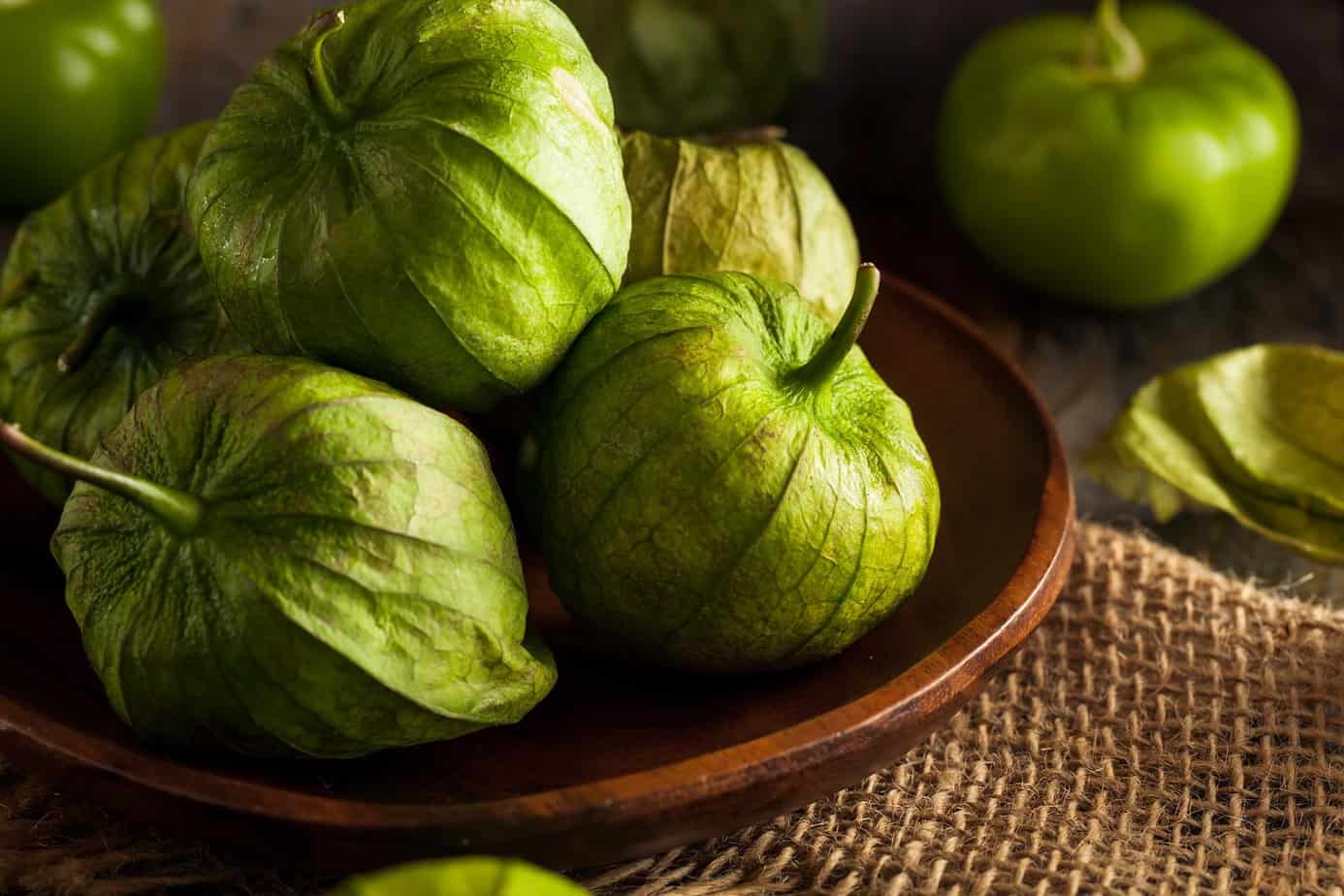If you’ve ever seen a tomatillo or a sauce made with tomatillos, you might have thought it was just a green tomato. That’s what I thought!
But you might be surprised to find that they’re very different. A green tomato is simply an unripened tomato, while a tomatillo is from a completely different plant. They taste different, too.
So just what exactly are tomatillos, and how can you use them your kitchen?
What’s a Tomatillo?
Tomatillos are an ancient fruit, dating back as far as 800 B.C. They are native to Latin America and were part of the cuisine of the Mayan and Aztec cultures. Today, they are still very common in Mexican cuisine.

Fresh Organic Tomatillo
The first thing that might surprise you about a tomatillo is the way it looks. Unlike tomatoes, tomatillos are covered in a papery husk, similar to a ground cherry. When you remove the husk, the fruit inside has a smooth skin like a tomato, but often has a sticky coating that can be easily washed off.
Tomatillos are members of the nightshade family, like tomatoes and eggplants, and they grow in the warm summer months, ripening in the late summer and early fall. Some varieties turn red, orange, or even purple when ripe, although they are usually harvested while still green. A mature tomatillo is about the size of a golf ball.
How do tomatillos taste?
What you probably really want to know, though, is what tomatillos taste like! Unripened, green tomatillos, as they are most commonly eaten, have a tart, tangy acidity and a juicy crunch. Tomatillos taste how I’d imagine the color bright green would taste.

Healthy Organic Green Tomatillos
Even raw, tomatillos are still sweeter and fruitier than a green tomato, which makes them better suited for fresh dishes whereas green tomatoes are almost always cooked or fried. Roasting or stewing tomatillos brings out an even deeper sweetness and herby flavor.
Tomatillos are also juicier than green tomatoes. The two should not be substituted for one another in recipes.
Start Cooking with Tomatillos
As with all produce, it’s important to know how to shop for tomatillos. They are widely available in North America. If your regular supermarket doesn’t carry them, check in a local Latin American grocer.
When picking them out in the store, be sure the husk is still papery and dry. It should also feel fairly snug against the fruit inside. The fruit itself should not feel mushy or have any dark spots on its skin.

Fresh delicious flavorful tomatillo sauce
If you have a garden, you may also consider growing your own tomatillos. If you’re familiar with growing tomatoes, you will find growing tomatillos is just as easy. Check out Rodale’s OrganicLife for specifics about successfully growing tomatillos.
This video from California Gardening also provides a comprehensive guide to growing tomatillos, including troubleshooting for slugs and a chutney recipe!
Now that you have your tomatillos, it’s time to get cooking! Tomatillos can be used raw or cooked.
Fresh Dips
Raw tomatillos are a great addition to fresh dips like guacamole or pico de gallo. Substitute some chopped up tomatillo for about half of the avocado in your favorite guacamole recipe. This will give your guac a crisp, citrusy tartness.
Or, try making a green pico de gallo by using tomatillo instead of ripe tomatoes, for a pico with a slightly bitter turn. I’d like to try using half tomatoes and half tomatillos—I think this would create a nice balance of sweetness and tartness. This recipe from Love and Lemons adds a tropical twist with kiwis.
Salsa Verde
Tomatillos are perhaps best known for their starring role in salsa verde. Salsa verde (which means “green sauce”) is a simple sauce that has many uses—eaten as a dip with tortillas or on tacos, burritos, enchiladas, or put on top of chicken, beef, or even eggs. This recipe from the Mexican Food Journal is a classic salsa verde recipe that’s great for your initial introduction to this versatile sauce.
Here’s a variation on a classic salsa verde that roasts the tomatillos and chiles for a slightly different flavor.
Quick tip: make a big batch of salsa verde and freeze some for later!
Once you’ve made your salsa verde, you can use it in a huge variety of recipes. Everyone loves an easy crock pot meal. This recipe from Skinny Taste yields a tender, shreddable chicken that is perfect for tostadas, tacos, or simply served over rice.
Health Benefits of Tomatillos
Because tomatillos are low in fat and calories, they are a great food for adding a healthy punch of flavor to your dishes. Tomatillos also contain Vitamins C, A, and K, as well as niacin, manganese, and magnesium. These vitamins and minerals are linked to benefits for the immune and digestive systems, and they help lower blood pressure, improve vision, and contribute to heart health.

Health Benefits of Tomatillos
Tomatillos also contain rare antioxidants called withanolides. These antioxidant compounds have anti-inflammatory powers that fight cancer-causing free radicals in our environment. These health benefits are a great reason to add tomatillos to your diet!
So remember, don’t confuse tomatillos with green tomatoes!
Tomatillo Quick Facts:
- Husk-covered like a ground cherry
- Native to Central America
- Have a tangy, sweet, citrusy, bright green flavor
- Can easily be purchased or grown
- Can be eaten raw or cooked, as in salsa verde
Have you ever had a tomatillo? Let us know in the comments! What’s your favorite tomatillo recipe?
References:
- http://www.thekitchn.com/whats-the-difference-between-green-tomatoes-and-tomatillos-222350
- http://www.chowhound.com/food-news/172184/what-are-tomatillos-exactly/
- https://www.organicfacts.net/health-benefits/vegetable/tomatillo.html
- http://www.rodalesorganiclife.com/garden/backyard-guide-raising-tomatillos
